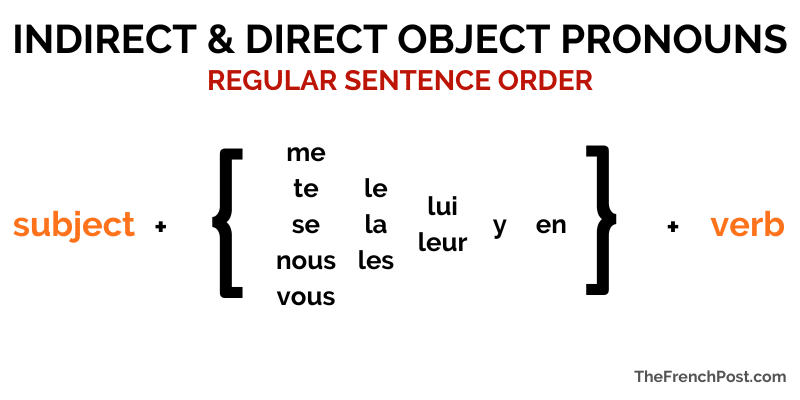
Does that title sound scary? It shouldn’t! Understanding French direct and indirect object pronouns isn’t difficult at all. The major difference is that in French, direct and indirect object pronouns go in different places in the sentence than they do in English.
Identifying Which Is the Direct and Which Is the Indirect Object Pronoun
For example, say you’ve got the sentence:
“Cassie brings her mother the keys.”
In French, this would be literally translated, word for word, in the same order:
Cassie apporte sa mère les clés.
In this sentence, “the keys” are the direct object, because that’s directly what the verb “bring” is referring to. Cassie isn’t bringing her mother anywhere; she’s bringing the keys.
The indirect object is what clarifies what’s happening to the direct object, and usually answers the question, “Where is the direct object going?” If you can put the word “to” in front of the word and it makes sense, it’s probably the indirect object. In this sentence, “the keys” are going TO “her mother”.
Also, you can’t have an indirect object without also having a direct object in the sentence. So if you only see one object, it’s got to be a direct object.
Okay so far?
The difference between the order in English and in French comes when you use a pronoun instead of a noun, such as “her” instead of “mother” or “them” instead of “keys”.
In English, we would keep the same order:
“Cassie brings her them.”
But not so in French. If the indirect and/or direct object is a pronoun, it goes in front of the verb, not behind it.
Cassie les lui apporte.
So in English, this would literally read:
“Cassie them her brings.”
Which, yes, might seem pretty weird right now, but you’ll get used to it pretty quickly as you progress in French.
French Direct and Indirect Object Pronouns
So now you may be wondering where those pronouns are coming from. Here are the two sets of object pronouns you’ll need to know.
| Direct Object Pronouns | |
| me | nous |
| te | vous |
| le/la | les |
| Indirect Object Pronouns | |
| me | nous |
| te | vous |
| lui | leur |
Notice that vous and nous are the same from their subject pronoun forms, no different from the words you’ve already learned. Also, it’s me and te for both direct and indirect object pronouns for 1st and 2nd person singular, so you don’t have to stop and think about those, either, when you’re forming a sentence with object pronouns.
So the only pronouns that you really need to learn are le/la/les if it’s a direct object and lui/leur for indirect objects. There are two additional object pronouns—y and en—that we discuss in a separate y/en pronoun post.
Order of French Direct and Indirect Object Pronouns
The last point for the lesson: when you have both indirect and direct pronouns in the same sentence, they go in a specific order, just like they would in English. For example, in English you would say:
“Claire bought me it.” (Verb → Indirect Object → Direct Object)
Not:
“Claire bought it me” (Verb → Direct Object → Indirect Object)
Below is a chart that shows you the order that object pronouns should go in French:

This chart might look overwhelming, but it really isn’t that bad. Here’s how I memorized the order when I first learned object pronouns:
- The ones referring to “me” or “you”, both plural and singular, go first, along with se (which we haven’t talked about in this post but is for reflexive actions that a third party is doing to themselves instead of someone or something else. Read all about reflexive verbs here.)
- After that, the direct third-person (le/la/les) pronouns go before the indirect third person (lui/leur) pronouns.
- Finally, y and en are the last two (in that order)
Make sense? Memorize the order for now, but know that as you progress in your French and start listening and reading the language, you’ll get used to the order pretty quickly, and it will sound wrong to you if the pronouns are out of order.
Next Steps after Object Pronouns
If you want to learn more about pronouns, follow up with y/en or with se reflexive verbs. Also note that the order of object pronouns changes slightly when you use the imperative tense, so see that post for a chart of that order. Good luck!



